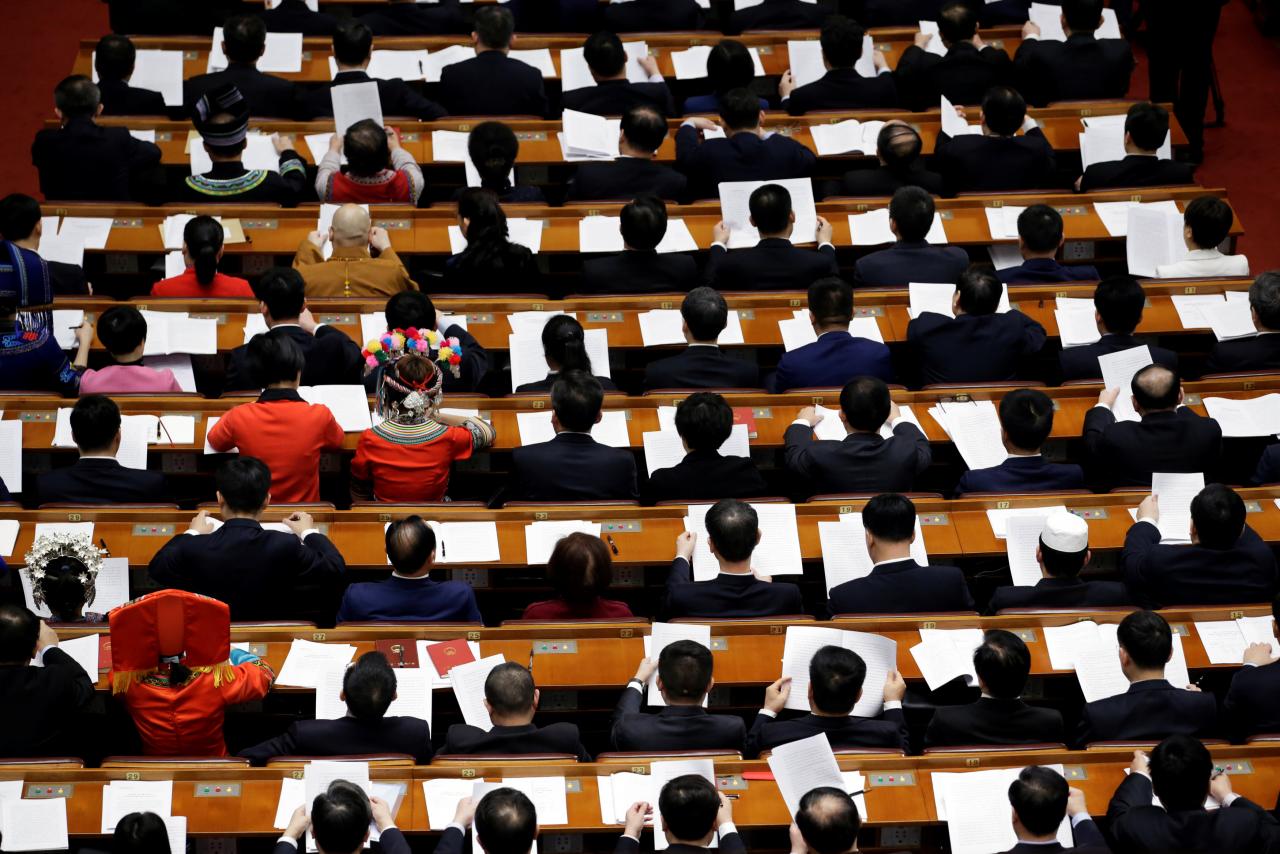China overhaul ministries
March 13, 2018 | Expert Insights

The Chinese government announced its intention to restructure a number of ministries on Tuesday. CPC officials have stated that the intention is to reduce inter-agency overlap, and help consolidate power with the Communist Party.
The banking and insurance regulatory agencies, that play an important role in managing corporate debt, were also merged.
Background
The People’s Republic of China is the second largest economy in the world. The trillion dollar economy averaged a growth rate of 10% through the first decade of this century, and has been slated to overtake America’s GDP in another 10 years. However, in recent years, growth has slowed to approximately 6.8% (as of 2017).
One of the key problems the Chinese economy faces today is debt, which is almost 250% of its GDP. Corporate debt makes up the bulk of this, at 165% of the GDP. China’s debt is higher than the United States debt; however it remains lower than Japan, which is the world’s most indebted leading economy. Experts have said that if China’s trajectory continues, then it will be looking at an economic slump sooner than later. Due to China’s increasing build-up of credit, more than one rating agency has downgraded China’s long term credit rating. In December 2017, the International Monetary Fund sounded an alarm regarding the growing debt-dependency in China. Since 2017, Beijing has been vocal about its intention to begin deleveraging processes, as recommended by the IMF.
The China Banking Regulatory Commission (CBRC) is a supervisory and regulatory body for Chinese banking institutions. CBRC was set up as the country’s independent regulator in 2004 in a response to increasing debt, undercapitalization, and non-transparent business practices.
The China Insurance Regulatory Commission (CIRC) was established in 1998. Its purpose is to “conduct administration, supervision and regulation of the Chinese insurance market, and to ensure that the insurance industry operates stably in compliance with law”. CIRC chairman Xiang Junho was placed under investigation in April 2017, and the agency does not have a permanent chair.
The CIRC has recently increased its intervention in corrupt or debt-ridden companies, an indication of shifting policy in Beijing. Notably, in February this year, the CIRC sized Anbang Insurance Group. Anbang was known for its aggressive international acquisitions and use of leverage. It held over $310 billion in assets. The company owned stakes in several companies across the world, and also owned the famous Waldorf-Astoria hotel in New York.
Analysis
On Tuesday, China unveiled a plan to overhaul its governmental agencies. According to media, this plan will be formalised by Sunday. The shake-up will affect a total of fourteen ministries, and will reduce the total number of ministries under the State Council to 26.
Seven new ministries will be formed, including: Natural Resources, Ecological Environment, Culture and Tourism, Veterans Affairs, Agriculture and Rural Affairs, Emergency Management, and National Health Commission. Other new departments include: China Banking and Insurance Regulatory Commission (CBIRC), International development cooperation agency, National Grain Strategic Reserves Bureau, Immigration Management Bureau, National Forest and Grass Bureau, and National Markets Supervision Management Bureau.
One of the most important mergers of this new proposal is the combining of the China Banking Regulatory Commission (CBRC) and the China Insurance Regulatory Commission (CIRC) to form the CBIRC.
“Finance is core to a modern economy and we must pay high attention to prevent financial risks and safeguard national financial security,” the proposal released on Tuesday read. According to the document, the CBIRC will be capable of “holding the bottom line to prevent systematic financial risk”. The new body will “eliminate systematic and institutional deficiencies that have prevented the market from carrying out a decisive role in resource allocation,” said State Councillor Wang Yang.
Some analysts have commended the move, which will coordinate policy and reduce inter-agency overlap. Tao Dong, Vice Chairman- China, at Credit Suisse Hong Kong said, “A large part of systemic risk also came from cross-asset class areas. The government is taking steps in the right direction for reining in financial risks and debt deleveraging.”
Together, China’s banking and insurance sectors are worth approximately $42 trillion, and have been a source of concern for state officials due to high credit. Others have noted that this move is intended to collate power with the Communist Party. Liu He, China’s top economic advisor called the reforms “revolutionary”. “We should understand the necessity of promoting this deep transformation… Strengthening the party’s leadership in all areas of work is the primary task of deepening the reform of the party and state institutions,” he said.
Assessment
Our assessment is that the new government structure is part of the centralization process characteristic of Xi Jinping’s rule. The recent removal of presidential term limits helped the President consolidate power, and drew concern from international observers. However, we believe that the amalgamation of the CIRC and CBRC will help the country crack down on credit. We have previously recommended that the Chinese Government improve financial supervision in order to manage its debt.








Comments